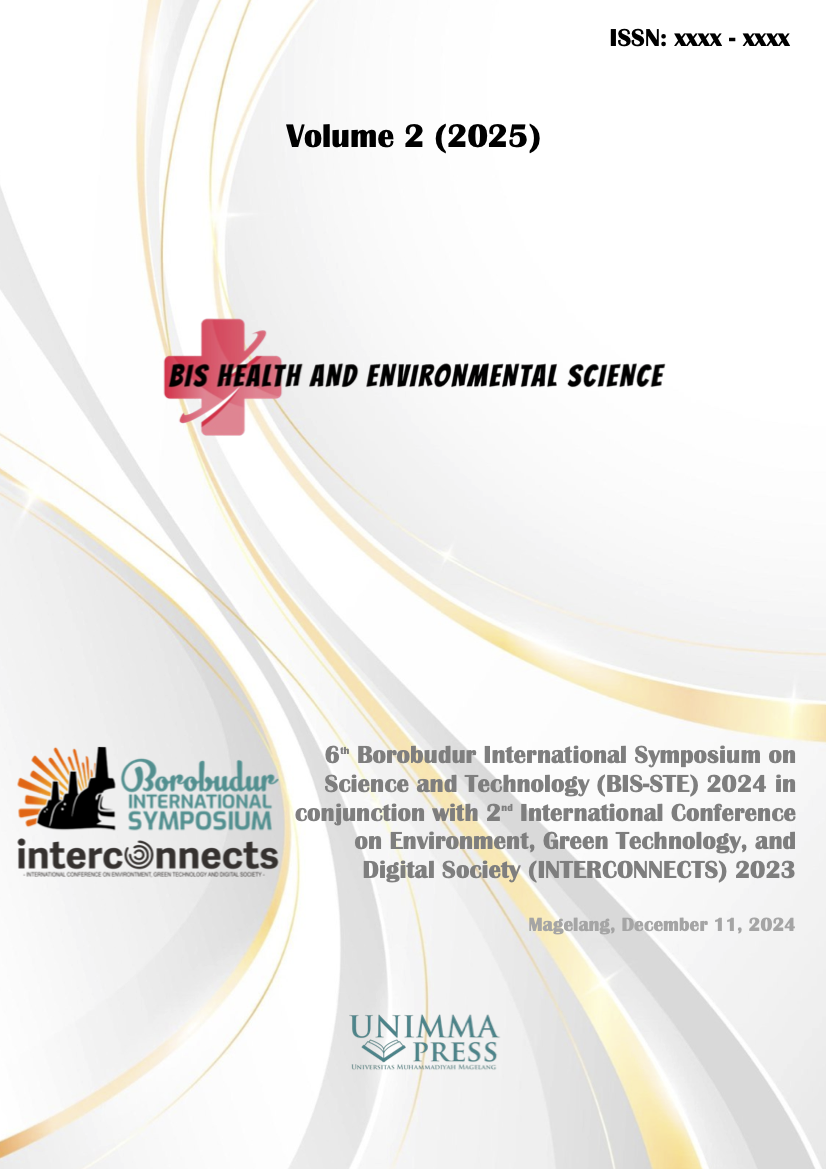The effect of health promotion on compliance with diabetic foot exercises in increasing foot sensitivity and controlling blood sugar levels
Keywords:
Diabetes mellitus, Health promotion, Diabetic foot exercises, Foot sensitivityAbstract
The increasing global prevalence of diabetes mellitus and its severe complications, particularly diabetic neuropathy, necessitate effective interventions. Management of neuropathy typically involves patient education, pain management, and meticulous foot care. To prevent foot sensitivity disorders, robust health promotion initiatives focused on blood glucose control are crucial, especially diabetic foot exercises which prevent injuries and enhance peripheral circulation. This study utilized a quasi-experimental design with pre- and post-tests and a control group (n=124 total, 62 in each group via proportional random sampling) to assess the impact of health promotion on adherence to diabetic foot exercises, foot sensitivity, and blood sugar control among individuals with diabetes in Magelang Regency. Results showed a highly significant difference (p<0.001) in both adherences to exercises and foot sensitivity in both groups. These findings conclusively demonstrate that health promotion significantly improves compliance with diabetic foot exercises, leading to enhanced foot sensitivity and better blood sugar control, underscoring the need for appropriate health promotion models in diabetes management.
References
[1] Avdic, T., Carlsen, H. K., Isaksson, R., Gudbjörnsdottir, S., Mandalenakis, Z., Franzén, S., Sattar, N., Beckman, J. A., McGuire, D. K., & Eliasson, B. (2024). Risk factors for and risk of peripheral artery disease in swedish individuals with type 2 diabetes: A nationwide register-based study. Diabetes Care, 47(1), 109–116. https://doi.org/10.2337/dc23-1198
[2] Bloomgarden, Z. T., Einhorn, D., & Handelsman, Y. (2017). Is HbA1c<7% a marker of poor performance in individuals >65 years old? Diabetes Care, 40(4), 526–528. https://doi.org/10.2337/dci16-0043
[3] Care, D., & Suppl, S. S. (2021). 2. Classification and diagnosis of diabetes: Standards of medical care in diabetes-2021. Diabetes Care, 44(January), S15–S33. https://doi.org/10.2337/dc21-S002
[4] Fadillah, R. (2017). Hubungan Frekuensi Melakukan Senam Kaki Diabetik Terhadap Skor Ankle Brachial Index Pada Penderita Diabetes Mellitus Tipe 2 Di Rumah Sakit Tni Ad Kota Kediri. Universitas Brawijaya.
[5] Ferdousi, M., Kalteniece, A., Azmi, S., Petropoulos, I. N., Ponirakis, G., Alam, U., Asghar, O., Marshall, A., Fullwood, C., Jeziorska, M., Abbott, C., Lauria, G., Faber, C. G., Soran, H., Efron, N., Boulton, A. J. M., & Malik, R. A. (2021). Diagnosis of neuropathy and risk factors for corneal nerve loss in type 1 and type 2 diabetes: A corneal confocal microscopy study. Diabetes Care, 44(1), 150–156. https://doi.org/10.2337/dc20-1482
[6] Grant, R. W., & Kirkman, M. S. (2015). Trends in the evidencelevel for the american diabetes association’s “standards of medical care in diabetes” from 2005 to 2014. Diabetes Care, 38(1), 6–8. https://doi.org/10.2337/dc14-2142
[7] Herder, C., Bongaerts, B. W. C., Rathmann, W., Heier, M., Kowall, B., Koenig, W., Thorand, B., Roden, M., Meisinger, C., & Ziegler, D. (2015). Differential association between biomarkers of subclinical inflammation and painful polyneuropathy: Results from the KORA F4 study. Diabetes Care, 38(1), 91–96. https://doi.org/10.2337/dc14-1403
[8] Hocking, S. L., Markovic, T. P., Lee, C. M. Y., Picone, T. J., Gudorf, K. E., & Colagiuri, S. (2024). Intensive lifestyle intervention for remission of early type 2 diabetes in primary care in australia: Direct-aus. Diabetes Care, 47(1), 66–70. https://doi.org/10.2337/dc23-0781
[9] Hsu, W. C., Araneta, M. R. G., Kanaya, A. M., Chiang, J. L., & Fujimoto, W. (2015). BMI cut points to identify at-Risk asian americans for type 2 diabetes screening. Diabetes Care, 38(1), 150–158. https://doi.org/10.2337/dc14-2391
[10] IDF. (2021). IDF Diabetes Atlas 2021 _ IDF Diabetes Atlas. In IDF official website. https://diabetesatlas.org/atlas/tenth-edition/%0Ahttps://diabetesatlas.org/data/en/world/
[11] Indonesia, P. E. (2014). Konsensus Pengelolaan Diabetes Melitus Tipe II di Indonesia. Jakarta: PB Perkeni.
[12] Leong, A., Daya, N., Porneala, B., Devlin, J. J., Shiffman, D., McPhaul, M. J., Selvin, E., & Meigs, J. B. (2018). Prediction of type 2 diabetes by hemoglobin A1c in two community-based cohorts. Diabetes Care, 41(1), 60–68. https://doi.org/10.2337/dc17-0607
[13] Muller, M., David-Tchouda, S., Margier, J., Oreglia, M., & Benhamou, P. Y. (2016). A Randomized Controlled Trial Comparing Telemedical and Standard Outpatient Monitoring of Diabetic Foot Ulcers. Diabetes Care 2015;38:1723-1729. Diabetes Care, 39(1), e9–e10. https://doi.org/10.2337/dc15-1659
[14] Riskesdas. (2023). Laporan Nasional Riskesdas. Badan Penelitian Dan Pengembangan Kesehatan.
[15] Salindeho, A., Mulyadi, & Rottie, J. (2016). Pengaruh Senam Diabetes Terhadap Kadar Gula Darah Penderita DM tipe 2. Ejournal Keperawatan (e-Kp), 4(1), 1–7.
[16] Skelton, D. A. (2001). Effects of physical activity on postural stability. Age and Ageing, 30(suppl_4), 33–39.
[17] Smith, M. (2011). Community/Public Health Nursing: Promoting the Health of Populations [Book Review]. Contemporary Nurse: A Journal for the Australian Nursing Profession, 37(2), 267.
[18] Smith-Strøm, H., Igland, J., Østbye, T., Tell, G. S., Hausken, M. F., Graue, M., Skeie, S., Cooper, J. G., & Iversen, M. M. (2018). The effect of telemedicine follow-up care on diabetes-related foot ulcers: A cluster-randomized controlled non inferiority trial. Diabetes Care, 41(1), 96–103. https://doi.org/10.2337/dc17-1025
[19] Soelistijo, S. (2021). Pedoman Pengelolaan dan Pencegahan Diabetes Melitus Tipe 2 Dewasa di Indonesia 2021. Global Initiative for Asthma, 46. www.ginasthma.org.
[20] Uccioli, L., Giurato, L., Meloni, M., Izzo, V., Ruotolo, V., Gandini, R., & Lipsky, B. (2016). Diabetes, Lower-Extremity Amputation, and Death. Diabetes Care 2015;38: 1852-1857. Diabetes Care, 39(1), e7. https://doi.org/10.2337/dc15-1914
Downloads
Published
Conference Proceedings Volume
Section
License

This work is licensed under a Creative Commons Attribution-NonCommercial 4.0 International License.

